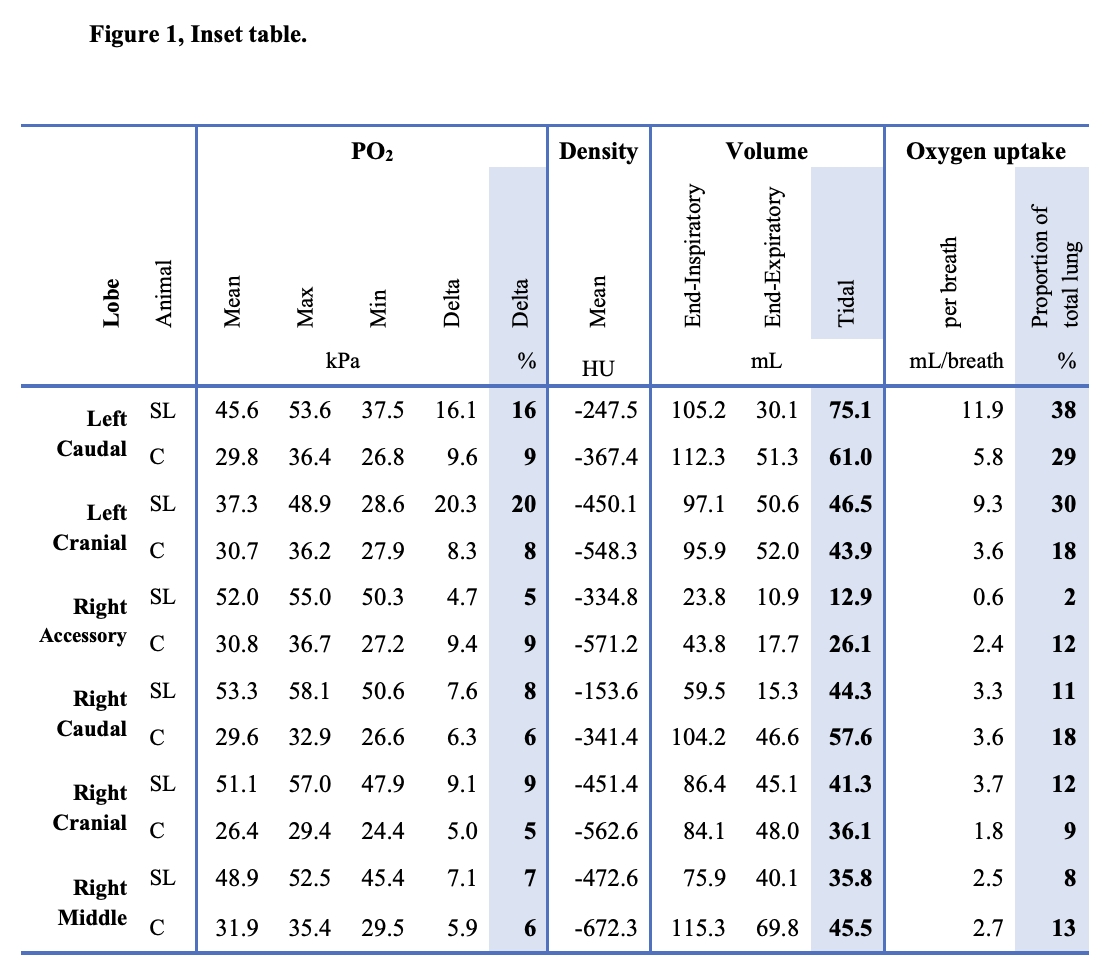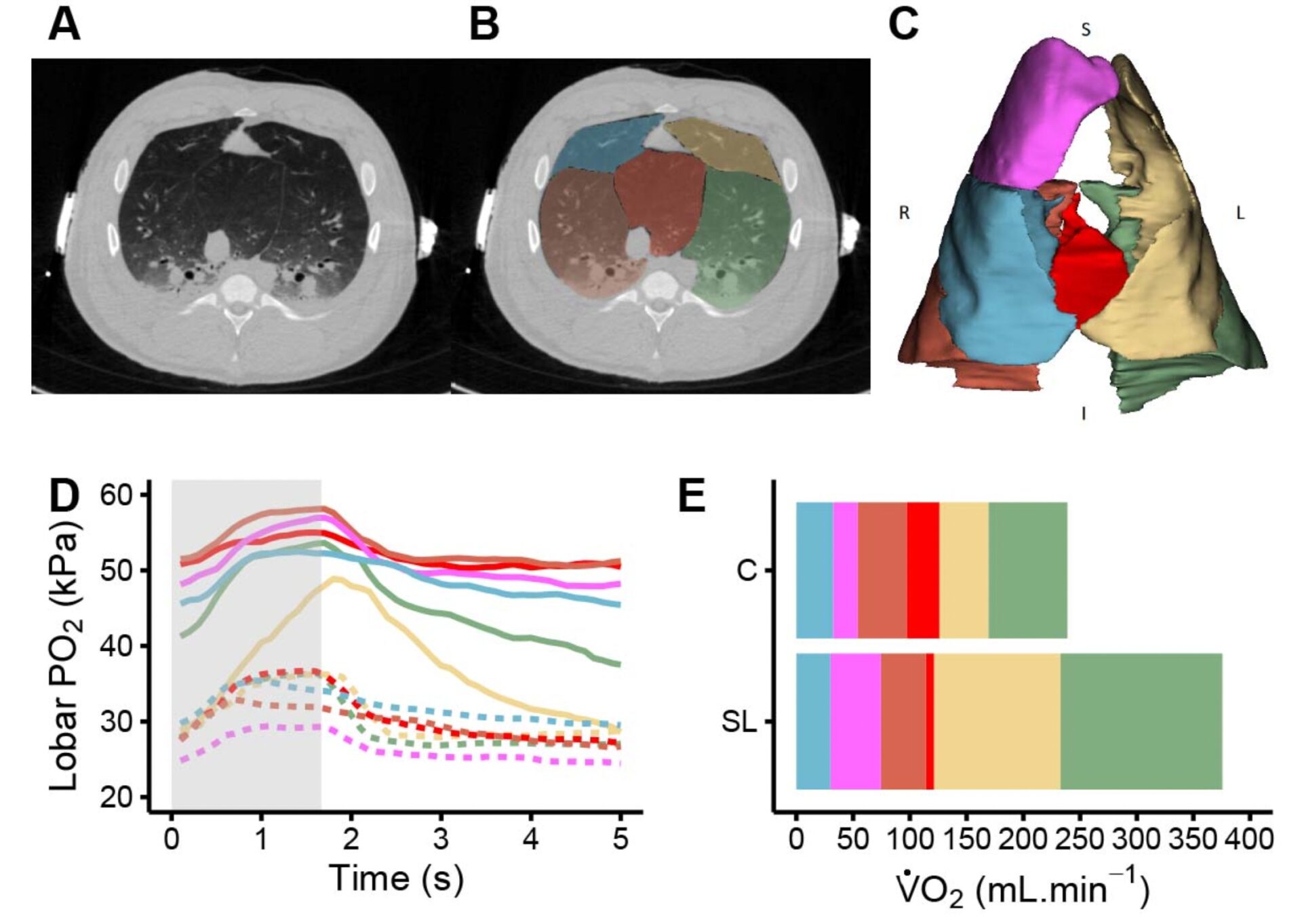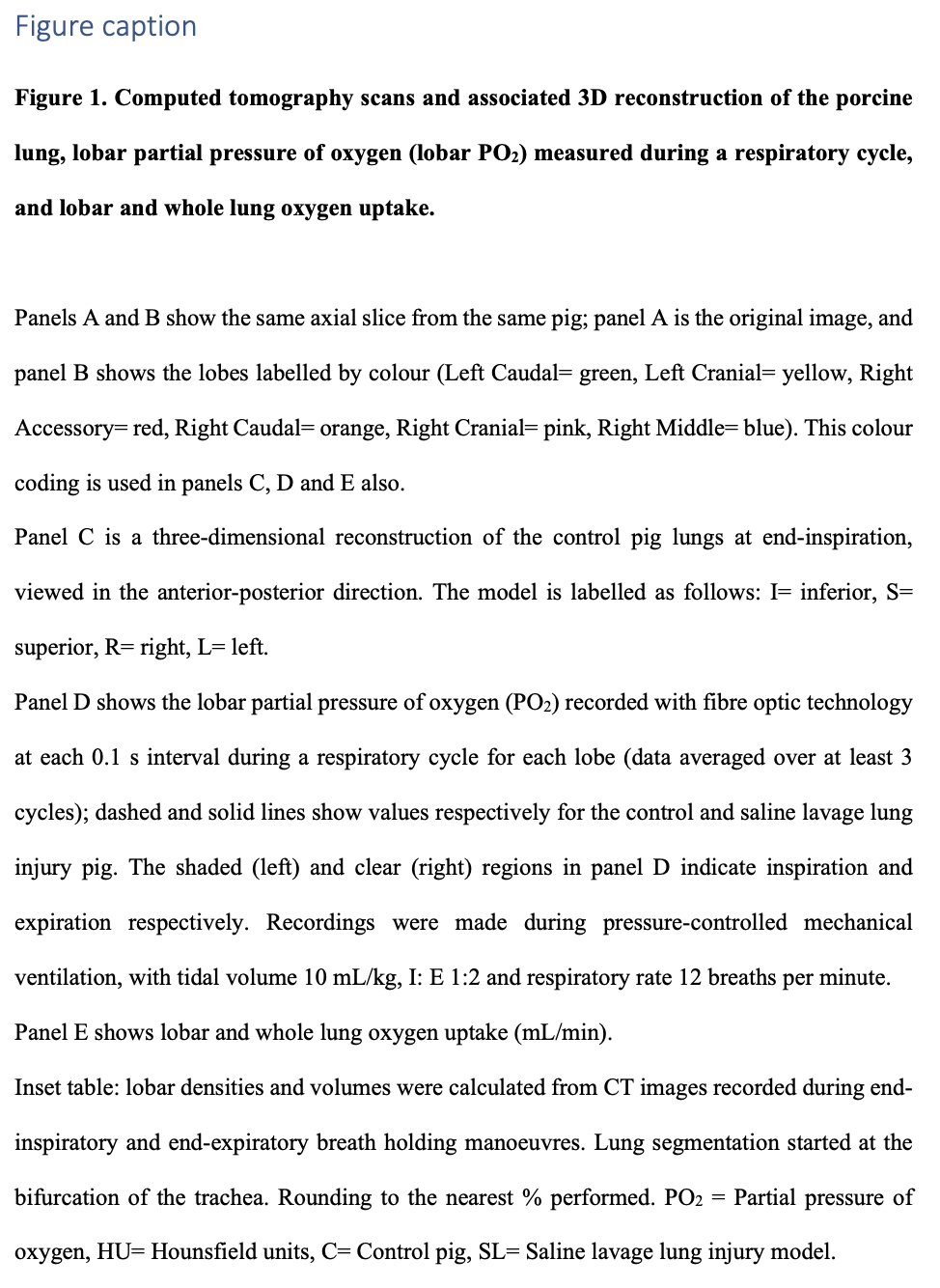Introduction Predicted post-operative lung function helps stratify lung cancer patients’ mortality risk and potential suitability for resection1. Carbon monoxide transfer factor and forced expiratory volume in 1 s tests are commonly used to provide global indicators of lung function. Gas exchange differs between lung regions in health and disease2, and this heterogeneity may be exaggerated by lung cancer, limiting the usefulness of whole-lung function tests. Quantifying lobar contribution to overall pulmonary gas exchange could provide more accurate predictions of post-operative lung function. Our study aimed to measure lobar oxygen uptake in a proof-of-concept experimental study. Methods Ethical approval (AREC ref.C98/16) was obtained and conformed with the NIH and ARRIVE guidelines3. Two pigs (29 kg) were studied in dorsal recumbency under general anaesthesia with intravenous infusion of ketamine, fentanyl and midazolam, and mechanical ventilation via tracheostomy. Mechanical ventilation was delivered in pressure-control mode with tidal volume of 10 mL/kg, respiratory rate 12 breaths per minute, inspiratory:expiratory ratio of 1:2, and inspiratory rise time of 0 s. A saline lavage surfactant-depletion lung-injury model was induced in one pig to study heterogeneous lungs4. Fine-bore, fibre-optic PO2 sensors (response time <150 ms) were inserted into a bronchoscope until the sensor tip was visible inside the main bronchus entering a lobe; the bronchoscope remained within the large airways5. Data for ~12 breaths were collected in each lobe and averaged to produce a single breath per lobe. PO2 tidal variation was calculated as the peak-to-trough difference in the averaged breath. Tidal variation in lobar PO2 (kPa) was then converted to tidal variation in oxygen concentration [DeltaPO2 (%)], dividing by 101.3 kPa. Whole-lung volume CT scans were recorded during end-inspiratory and end-expiratory breath-holding manoeuvres under the same ventilation conditions as during the lobar PO2 measurements. Lobar volumes were calculated via segmentation at 3 mm intervals; figure 1A, B and C illustrate the segmentation process. Gas volumes were calculated as Lobar Gas volume (mL)= Lobar volume (cm3) x -[Mean voxel density (HU)]/1000 and lobar oxygen uptake calculated by multiplying tidal gas volume by DeltaPO2 (%). Results Figure 1D illustrates lobar PO2 tidal variation, greater in the saline lavage lung injury model than in the control pig. Figure 1 inset table presents lobar PO2, end-inspiratory, end-expiratory and tidal volumes, and the associated lobar oxygen uptake. PO2 tidal variation ranged from 4.7 to 20.3 kPa in different lobes. Lobar tidal volume ranged from 12.9 to 75.1 mL, with lobar oxygen uptake ranging from 0.6 to 11.9 mL/breath. Figure 1E shows oxygen uptake in both animals, visualising the difference between lobes, and overall pulmonary oxygen uptake between animals. Conclusions We demonstrated the feasibility of a novel technique to calculate lobar oxygen uptake in mechanically ventilated control and saline-lavage lung-injury pig models. The distribution of lobar contribution to gas exchange can vary significantly, even in patients with similar overall lung function, but tests currently used cannot determine gas exchange at the lobar level. Following refinement, the proposed technique could provide valuable insight to support the decision on patients’ suitability for lobar resection.
Physiology 2021 (2021) Proc Physiol Soc 48, OC38
Oral Communications: A proof-of-concept experimental study to quantify lobar gas exchange
Jack Gallifant1, John Cronin1, 2, Federico Formenti1, 3, 4
1 Centre for Human and Applied Physiological Sciences, School of Basic and Medical Biosciences, King’s College London, London, United Kingdom 2 Department of Anaesthesia, Guy's and St Thomas' NHS Foundation Trust, London, United Kingdom 3 Nuffield Division of Anaesthetics, University of Oxford, Oxford, United Kingdom 4 Department of Biomechanics, University of Nebraska Omaha, Omaha, NE, The United States of America
View other abstracts by:
Where applicable, experiments conform with Society ethical requirements.



